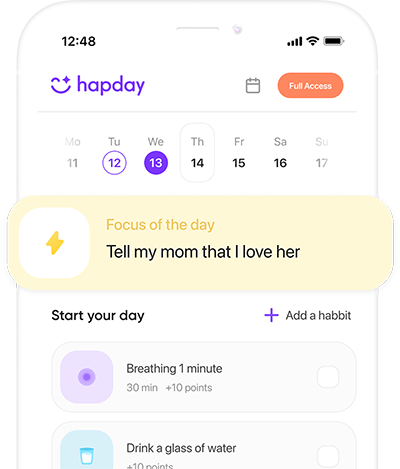Table of Contents
- What is Childhood Trauma?
- Types of Childhood Trauma
- The Impact of Childhood Trauma
- Breaking Free from the Clutches of Childhood Trauma
- The Role of Society in Addressing Childhood Trauma
- Final Thoughts
What is Childhood Trauma?
So, here’s the thing about childhood trauma—it’s everywhere. I mean, kind of like trying to avoid stepping on sidewalk cracks, but infinitely more serious. It wraps its tendrils silently around countless lives, sowing seeds of pain that can bloom into serious health issues, both mental and physical. If we’re to really grapple with this beast, we’ve got to get down to the nitty-gritty: what it is, what it does, and how on Earth we can pry ourselves free—hopefully, without losing too much sleep over it.
Picture this: a kid’s formative years, a time meant for innocent play and learning, marred by darkness. That darkness is what we call childhood trauma. Sounds heavy, right? Well, it is. And it comes in many flavors—from physical abuse to neglect and the dysfunction that seeps in from a troubled home life. According to the National Child Traumatic Stress Network, a staggering one in four children endures something so traumatic, it could haunt them long into adulthood. Yes, really.
Types of Childhood Trauma
- Physical Abuse: The folks over at the World Health Organization would tell you about the grim stat—25% of adults recall a childhood of physical pain inflicted by those who were supposed to care for them.
- Emotional Abuse and Neglect: Picture being torn down with words and indifference. Though it leaves no visible scars, it can be just as destructive to a child’s self-worth.
- Sexual Abuse: According to the National Sexual Violence Resource Center—no joking matter here—one in four girls and one in six boys face this horror before reaching 18.
- Household Dysfunction: Imagine living in a storm. Witnessing domestic violence, grappling with a parent’s substance abuse, or dealing with a mentally ill family member—it’s… well, it’s a lot.
The Impact of Childhood Trauma
Trauma from childhood? It doesn’t just pack up and leave once you hit adulthood. It’s sticky, lingering, affecting emotional wellbeing, relationships, and—let’s be honest here—even waking up on rainy mornings.
Psychological Effects
- Post-Traumatic Stress Disorder (PTSD): Kids who go through trauma may relive their nightmares as adults. The American Psychological Association sheds light on PTSD—a whirlwind of flashbacks, night sweats, and anxiety that’s off the charts.
- Depression and Anxiety: Then there’s the sandwich of gloom, with depression or anxiety as ingredients. Seriously, the Centers for Disease Control and Prevention point these out as common fallout.
- Attachment Issues: Secure attachments? A sense of safety? Kids with trauma in their rearview mirror often find that whole deal elusive—trust becomes a mythical beast.
Physical Health Consequences
- Chronic Health Issues: The infamous ACE Study ties a childhood filled with trauma to adult health woes—think heart disease, obesity, and diabetes. Not the kind of prizes you want to win.
- Increased Risk of Substance Abuse: Sometimes, self-medicating feels like the only option. For many, this leads to substance dependency—an escape route that unfortunately circles back.
Breaking Free from the Clutches of Childhood Trauma
So there’s hope. Healing is possible, with time, empathy, and sometimes, a good therapist who doesn’t charge the Earth. The menu of recovery is diverse—let’s dive in.
Therapeutic Interventions
- Cognitive Behavioral Therapy (CBT): It’s like untangling the mess in your head. CBT allows for fresh eyes on negative thought loops, which can be life-changing. Seriously, Psychological Bulletin thinks so too.
- Eye Movement Desensitization and Reprocessing (EMDR): Picture focusing on trauma, while juggling some sensory input. Studies from the Journal of EMDR Practice and Research show this can be a big relief for PTSD sufferers.
- Trauma-Informed Care: Creating spaces that focus on safety and empowerment—whether in schools or doctor’s offices—can encourage healing for those who’ve faced trauma.
Self-Help Strategies
- Mindfulness and Meditation: Staying present—tricky, but it slows the heartbeat and quells anxiety. Research—and I can’t believe I’m citing this—by JAMA Internal Medicine vouches for this calming effect.
- Journaling: Writing can be cathartic. Forget grammar; the Journal of Research in Personality sees value in letting words flow as a form of therapy.
- Physical Activity: Get moving! Exercise is a wellness elixir that’s great for body and soul. Not to brag, but Harvard’s been saying this for ages.
Community Support
- Support Groups: Sharing a room (or a Zoom call), stories spilling out alongside laughter and tears—there’s strength in numbers.
- Online Resources: For the digital folk, Hapday is a haven of resources and connections for those untangling the threads of their past.
The Role of Society in Addressing Childhood Trauma
This isn’t a solo gig. Society as a whole has to stand up—a tall order, but listen, it’s crucial.
Education and Awareness
It’s about spotting the signs, intervening early, and imparting skills so kids can manage their emotions and stand resilient. Schools, this is your cue!
Policy and Advocacy
It’s about time we talk policy—safe environments for children aren’t optional. Let’s push for trauma-informed actions across healthcare, education, and social services. It’s the least we owe our future.
Final Thoughts
Alright, let’s wrap this up. Understanding is the first stepping stone toward change. With both expert guidance and the comforting familiarity of self-help, rising above childhood trauma becomes a story—not just of survival, but of thriving.
Need more? Have a gander at Hapday for tools and community support. Changing lived realities, one step at a time.

